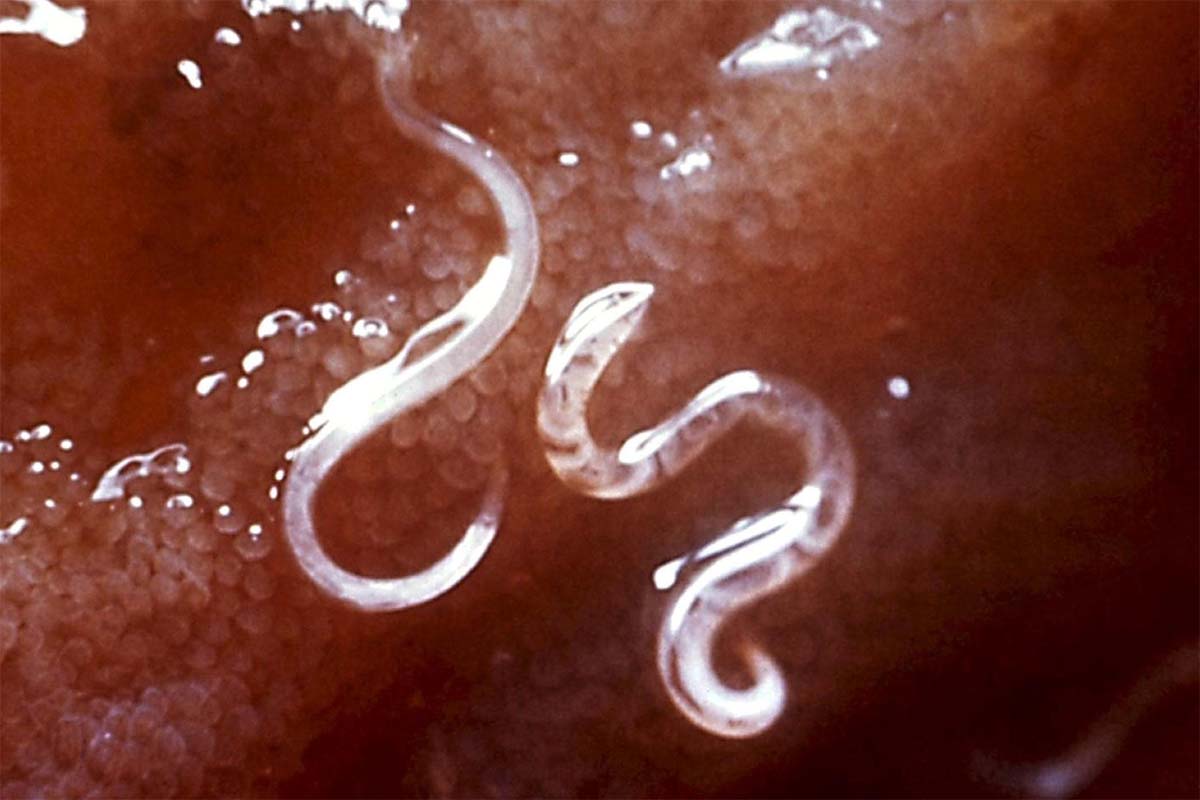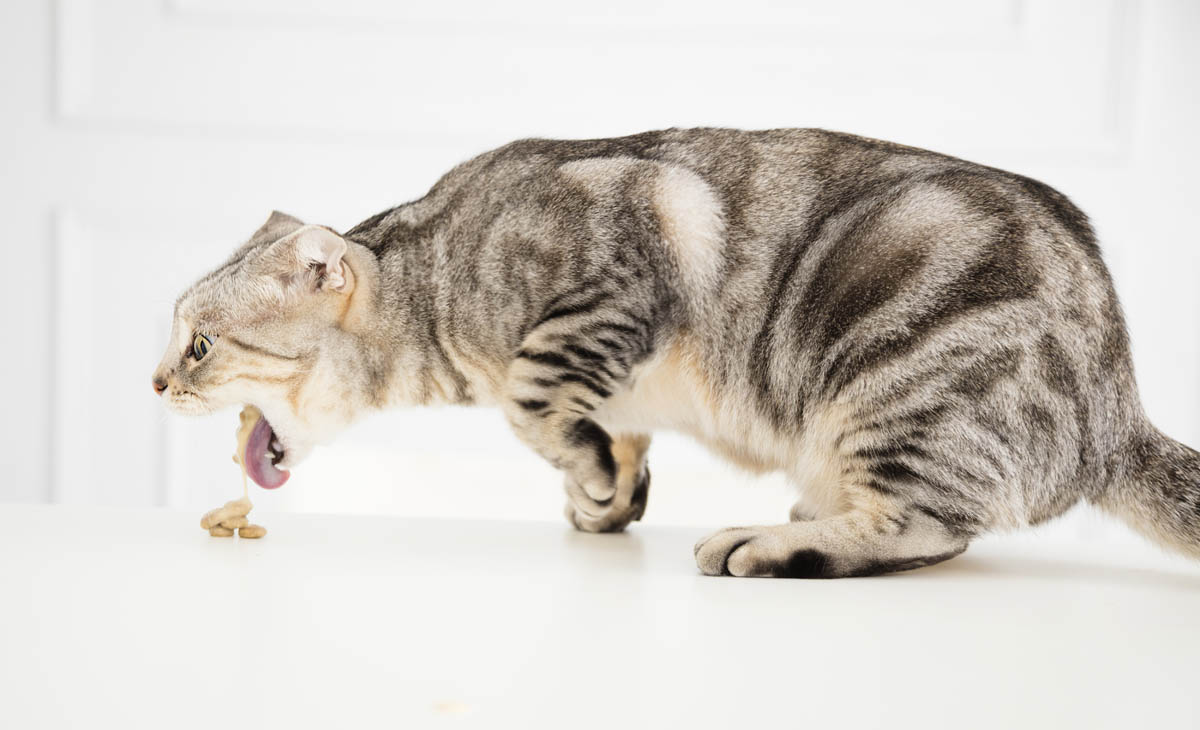Cats are host to a number of parasitic worms, which live in the gastrointestinal tract of their host. Parasitic worms cause discomfort, nutritional deficiencies, anemia, intestinal blockages and stunted growth. It is important for pet owners to be aware of the risks of intestinal worms, know what to look for.
Most gastrointestinal worm infections go undetected unless there is a heavy worm burden or eggs are found during routine fecal examinations. Kittens are at greatest risk due to their small size and increased nutritional requirements for growth.
Types of intestinal worms in cats
There are several types of gastrointestinal (GI) worms that can affect cats.
- Roundworms (Toxocara cati and Toxascaris leonina): These are the most common intestinal parasites in cats. Roundworms are long, spaghetti-like worms that live in the cat’s intestines and consume the nutrients from the cat’s food. Cats can get infected by ingesting worm eggs from contaminated soil or feces, or by eating infected rodents.
- Tapeworms (Dipylidium caninum and Taenia taeniaeformis): Tapeworms are long, flat worms that attach themselves to the cat’s small intestine. Cats often get tapeworms from swallowing a flea infected with tapeworm larvae or by eating an infected rodent.
- Hookworms (Ancylostoma tubaeforme, A. braziliense, A. ceylanicum and U. stenocephala): These small, thin worms attach to the wall of the small intestine and feed on the cat’s blood. Cats can get hookworms by ingesting the larvae, either from contaminated soil or during nursing if the mother cat is infected.
Symptoms of a worm infection
Symptoms of worms may not always be obvious unless the cat has a heavy worm infestation. As noted above, tapeworms and roundworms compete with the cat for nutrients, which can lead to nutritional deficiencies, while hookworms feed on the cat’s blood, causing anemia.
Roundworm
- Poor coat condition
- Presence of worms in the vomit or feces (heavy infestations)
- Pot-bellied appearance, especially in kittens
- Weight loss
- Coughing due to roundworm migration through lungs
- Stunted growth in kittens
- Loss of appetite
- Severe infestations can lead to pneumonia and intestinal and bowel blockage
Tapeworm
- Weight loss
- Proglottids can cause anal itching, and the cat may scoot his or her anus across the floor
- Once outside the body, the proglottid dries out, revealing the eggs, which look like sesame seeds
- Weight loss
- Some tapeworms release their attachment to the small intestinal wall and move to the stomach; the cat may then vomit it back up
- Biting or licking their anal area or scooting their hindquarters along the floor
- The fur may also take on a poor appearance
- Weight loss due to the tapeworm competing for nutrients with the cat
- Vomiting can occur if the tapeworm can detach from the small intestine which the cat vomits back up
Hookworm
- Dark, tarry stools
- Pale mucous membranes due to anemia
- Diarrhea
- Poor coat condition
- Skin irritation, especially on the feet where hookworm larvae penetrate the skin
- Weight loss
- Stunted growth in kittens
Why is my cat vomiting worms?
The presence of worms in cat vomit is quite rare. Usually, cats remain in the small intestines unnoticed. If worms are expelled from the body, it is via the feces after the cat has been dewormed.
The presence of worms in vomit signifies a heavy or advanced infestation that can irritate the lining of the small intestine, causing inflammation, which can cause gastrointestinal symptoms like vomiting. It is also possible for some worms to migrate into the stomach. This is not the typical location for these worms, but they can end up there due to the peristaltic movements of the gut, especially when the gut is overloaded with worms.
Roundworms are the most common intestinal worm in cats and are most likely to be vomited. Roundworms live freely in the small intestine, while tapeworms and hookworms attach to the wall of the small intestine with their mouthparts. This anchoring to the small intestinal wall makes them less likely to be vomited unless for some reason the worm detaches.
What do worms look like?
Roundworm:

Roundworms are 10 – 15 cm long, white to cream and have a spaghetti-like appearance. The image above shows roundworms in the stool of a young puppy.
Tapeworm:

Adult tapeworms are long, flat, segmented worms that can grow up to 60 cm long. The body of the tapeworm is made up of a series of segments, with the head (or scolex) at one end. The head is typically equipped with suckers or hooks that the worm uses to anchor itself to the intestinal wall of the host.
Hookworm:

How did my cat get worms?
Worms have evolved a number of mechanisms to infect their hosts. Worm eggs are present in the environment, can survive for months to years and can be difficult to eradicate. Some worm species rely on an intermediate host (such as a flea or a rodent/bird) to infect the cat.
Tapeworms:
Dipylidium caninum has a lifecycle that involves fleas as intermediate hosts. Tapeworm segments (proglottids) containing eggs are shed in an infected animal’s feces. Flea larvae consume these eggs as they feed on organic debris. The tapeworm eggs hatch within the flea larvae, and the tapeworm larvae continue to develop as the flea matures. If a cat ingests an infected flea while grooming, the flea is broken down in the cat’s stomach, releasing the tapeworm larva. The larva then attaches to the lining of the small intestine, where it grows into an adult tapeworm. The cycle starts again when the tapeworm releases segments filled with eggs that are passed in the cat’s feces, ready to be consumed by flea larvae. Hence, controlling fleas is a key component of preventing tapeworm infections in cats.
Roundworms:
Kittens can contract roundworms in utero if their mother is infected or through their mother’s milk post-birth (transmammary infection). When the female cat is infected with roundworms, some larvae migrate to the tissues where they form a cyst and become dormant. Pregnancy can reactivate larvae which migrate to the mammary glands and infect nursing kittens.
Cats can also become infected via ingestion of roundworm eggs from contaminated soil or feces in the environment. Roundworm eggs are resistant and can survive in the environment for years. Cats can also become infected by eating an infected intermediate host, such as a rodent, bird, or insect, which contains roundworm larvae.
Hookworms:
The most common route of exposure is ingestion of hookworm larvae, which can be present in contaminated soil or feces. Cats that spend time outdoors or who hunt can accidentally ingest the larvae while grooming or by consuming an infected rodent or bird. Hookworm larvae can also directly penetrate the skin using their specialised mouthparts along with protease enzymes which further break down the tissue. Once inside the host, the larvae migrate to the cat’s small intestine, mature into adult worms, and attach to the intestinal wall to feed on blood. Hookworms can cause a variety of health issues, so regular veterinary care and preventive measures are crucial.
It may also be possible (but hasn’t been conclusively proven) that kittens can contract hookworms through their mother’s milk.
How do you treat a cat that is vomiting worms?
If you have noticed worms in cat vomit, it is important to seek veterinary care, there are no effective home treatments for parasitic worms. If possible, bring along a sample of vomit and feces. As worm eggs pass out of the body via feces, a stool sample can be examined under the microscope to identify the type of worm eggs present.
Veterinary dewormers come in tablet or topical form, but not all dewormers kill all types of worms. For example, most roundworm treatments don’t cover tapeworms, and therefore it is important to diagnose the type of worms your cat has via a fecal sample. Repeat treatments will be necessary as worming treatments are only effective against adult worms and not larvae.

